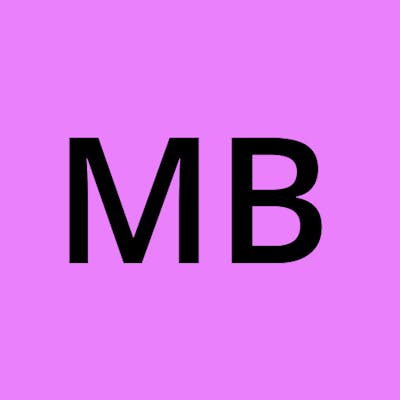I have been learning HTML & CSS for a few days and decided to make something from it. Here's a step-by-step guide of how to make a MINION! It's a fairly simple design, nothing too complex. (Scroll to the bottom to see the final result)
PS: I'm just a beginner (literally been only 2 days since I started CSS :P), so my code may not be perfect. If you come across errors/ improvements/ suggestions, do let me know in the comments below.
Let's begin!
Step 1:
Get all the parts in order.
For a minion we first need an Upper Body which contains the eye and mouth, the goggles, the arms, and the dungaree (let's just call it a dress, for simplicity).
Then we construct the lower body with the lower half of the dress, legs and shoes. The HTML code below shows all the parts accordingly.
<body>
<div class="minion">
<div class="upper-body">
<div class="eye">
<div class="eye-ball"></div>
</div>
<div class="eye-band"></div>
<div class="mouth"></div>
<div class="left-arm">
<div class="left-palm"></div>
</div>
<div class="right-arm">
<div class="right-palm"></div>
</div>
<div class="left-strap"></div>
<div class="right-strap"></div>
<div class="dress"></div>
</div>
<div class="lower-body">
<div class="left-leg">
<div class="left-shoe"></div>
</div>
<div class="right-leg">
<div class="right-shoe"></div>
</div>
</div>
</div>
</body>
You'll see how all the parts have been segregated into right and left, including the straps of the dress.
Step 2:
Next we style using CSS.
The way I did it was to create all the parts first and position them properly later. I have pasted the CSS code with the positioning. You might have to change some measurements accordingly. First is the upper and lower body.
.minion {
position: absolute;
}
.upper-body {
width: 80px;
height: 100px;
border-radius: 40px 40px 0 0;
background-color: yellow;
position: absolute;
left: 100px;
top: 100px
}
.lower-body {
width:80px;
height:25px;
background-color:#576ad4;
border-radius: 0 0 10px 10px;
position: relative;
left:100px;
top: 200px
}
Then the dress, which is attached to the lower body.
.dress {
width: 40px;
height:25px;
background-color: #576ad4;
position: relative;
left: 20px;
bottom: 110px;
}
.left-strap, .right-strap {
width:5px;
height: 30px;
background-color: #576ad4;
}
.left-strap {
position: relative;
left: 10px;
bottom: 70px;
transform: rotate(-60deg)
}
.right-strap {
position: relative;
left: 65px;
bottom: 100px;
transform: rotate(60deg)
}
Then we work on facial features - eye, goggles and mouth. So there are 4 components essentially, including the eyeball.
.eye-band {
width:80px;
height: 8px;
background-color: black;
}
.eye {
width: 35px;
height: 35px;
background-color: white;
border-radius: 50%;
border:3px solid black;
position: relative;
left: 20px;
top: 25px;
}
.eye-ball {
width: 10px;
height: 12px;
background-color: black;
border-radius:50%;
border: 5px solid brown;
position: relative;
left: 7px;
top: 7px;
}
.mouth {
width: 15px;
height: 10px;
background-color: black;
position: relative;
left: 33px;
top: 20px;
border-radius: 50%
}
Now, its time for the arms and palms. Left and right have been done separately. They require a certain degree of rotation to fit nicely. Again, it can be changed to make different actions of the hand.
.left-arm, .right-arm {
width: 7px;
height: 40px;
background-color: yellow;
border-radius: 10px;
}
.left-arm {
position: relative;
right: 8px;
top: 20px;
transform: rotate(10deg);
}
.right-arm {
position: relative;
left: 80px;
bottom: 20px;
transform: rotate(-10deg)
}
.left-palm, .right-palm {
width: 8px;
height: 12px;
background-color: #6f717a;
border-radius: 120px 120px 40px 40px;
}
.left-palm {
position: relative;
top: 30px;
transform: rotate(-10deg);
}
.right-palm {
position: relative;
top: 30px;
transform: rotate(10deg);
}
Finally, we have the legs and shoes. Right and left separately.
.left-leg, .right-leg {
width: 20px;
height: 10px;
background-color: #576ad4;
}
.left-leg {
position: relative;
left: 15px;
top: 25px;
}
.right-leg {
position: relative;
left: 45px;
top: 15px
}
.left-shoe, .right-shoe {
width: 25px;
height: 10px;
background-color:#6f717a;
border: 1px solid black;
}
.left-shoe {
position: relative;
top: 10px;
right: 5px;
transform: skewX(-10deg);
border-radius: 50px 30px 0
}
.right-shoe {
position: relative;
top: 10px;
transform: skewX(10deg);
border-radius: 30px 50px 30px 0
}
Step 3:
Now we get to the interesting part: Animating the Minion!
I have done a simple animation of the minion waving hello. We add 'animation-name', 'animation-duration' and 'animation-iteration-count' to the left-arm selector, then use the keyframes rule to animate it.
.left-arm {
position: relative;
right: 8px;
top: 20px;
transform: rotate(10deg);
animation-name: say-hi;
animation-duration: 1.5s;
animation-iteration-count: infinite;
}
@keyframes say-hi {
0% {
transform: rotate(120deg);
transform-origin: top right;
}
10% {
transform: rotate(155deg);
transform-origin: top right;
}
25% {
transform: rotate(120deg);
transform-origin: top right;
}
50% {
transform: rotate(150deg);
transform-origin: top right;
}
100% {
transform: rotate(120deg);
transform-origin: top right;
}
}
Here's a look at the final result. (Click on 'Result' to see the outcome)
I have tried to make all measurements and colors as close to real as possible. I would like to reiterate that I'm still a beginner. Any suggestions for improvements are welcome.
Thank you for reading! See you in my next blog.
